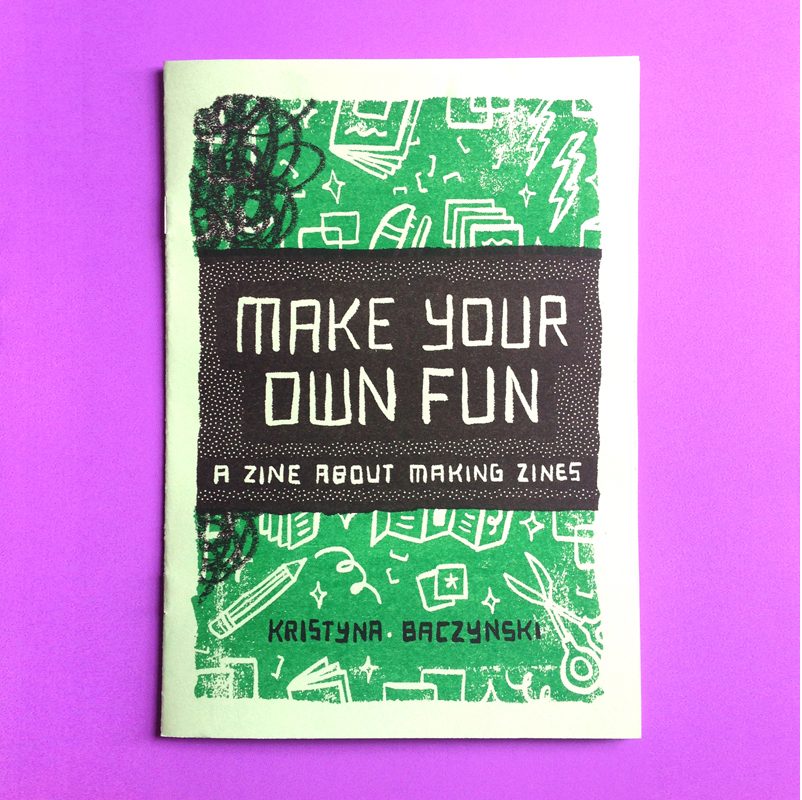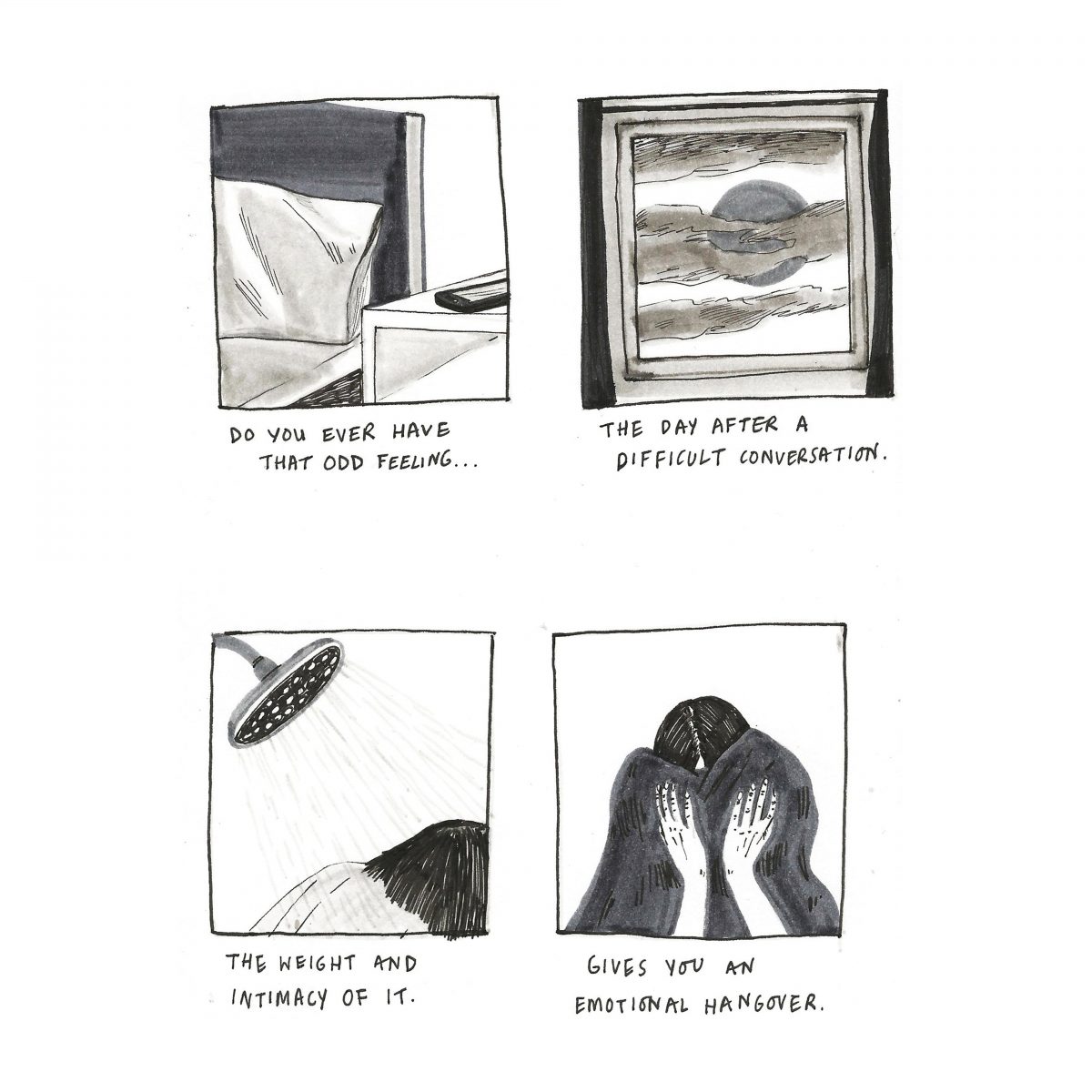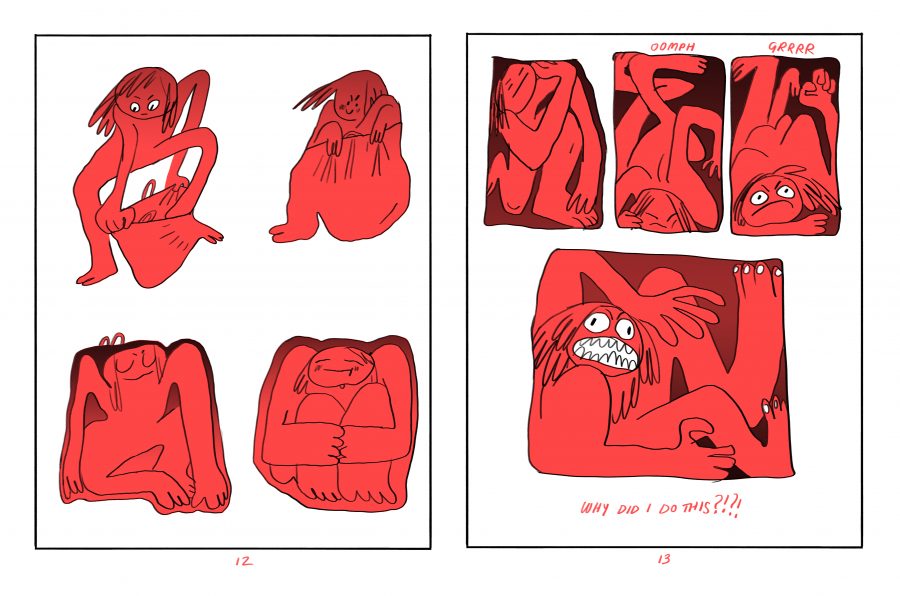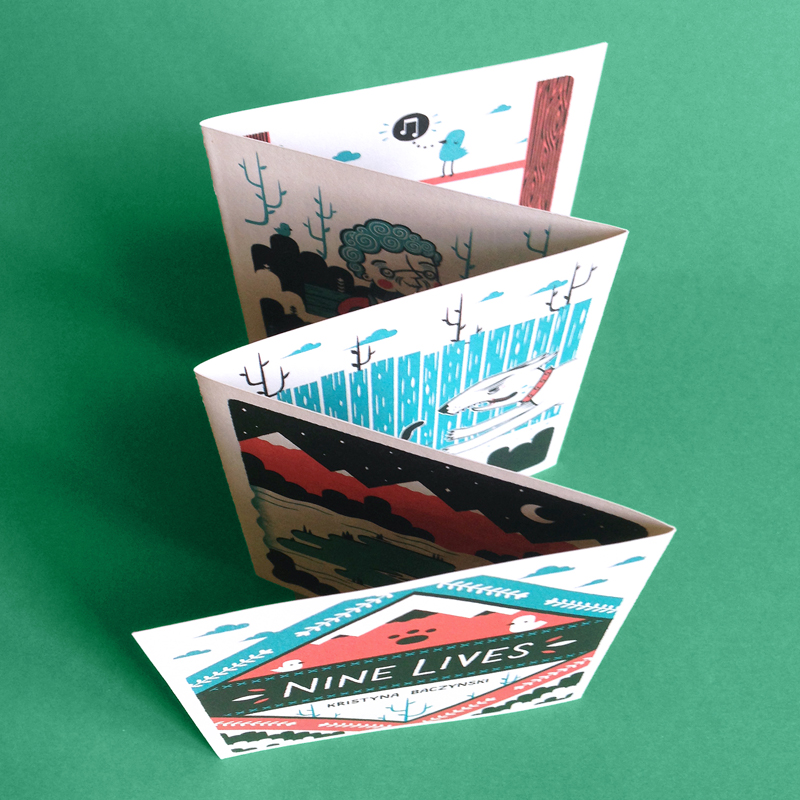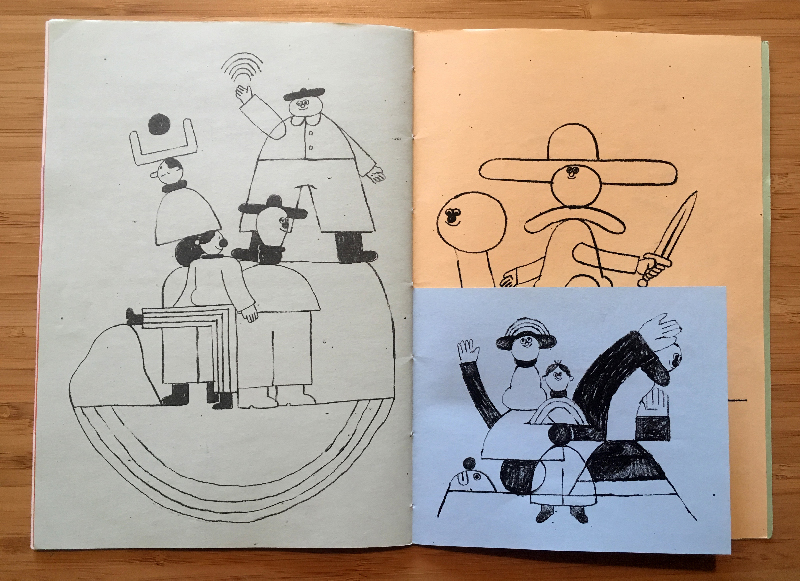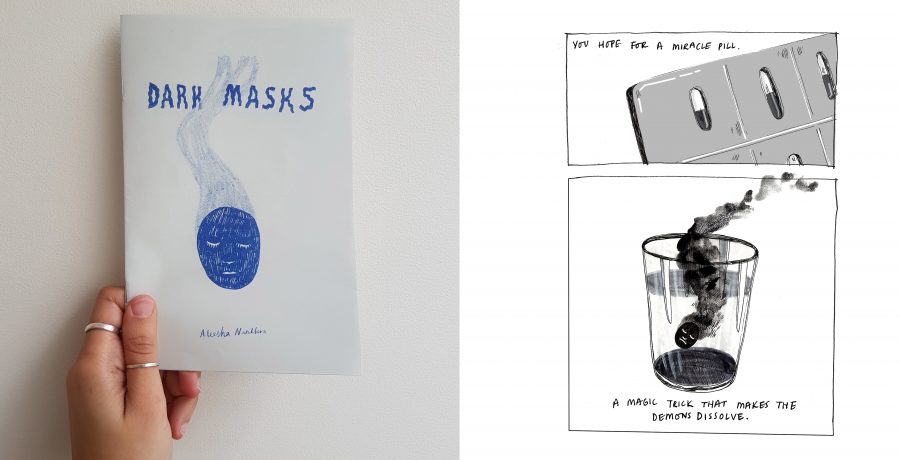Top Tips to Make Zines
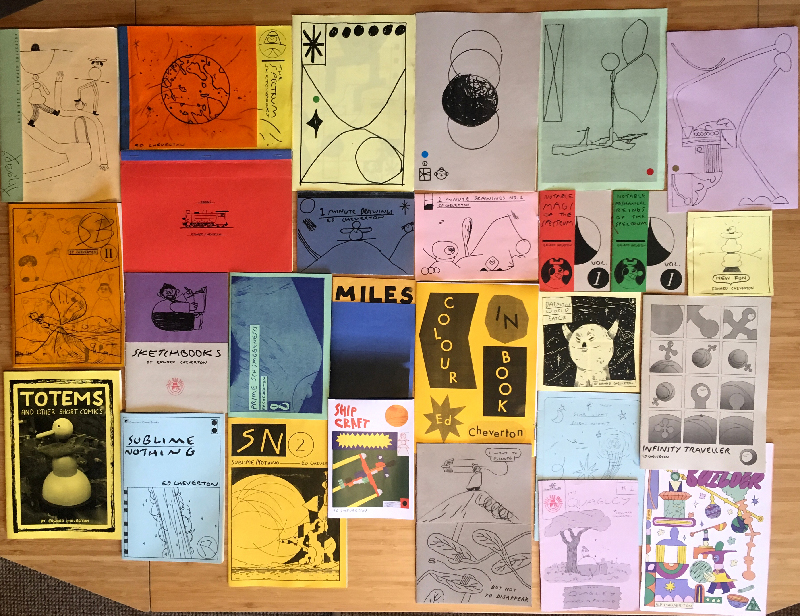
Zine Library by Ed Cheverton
Self publishing is a fantastic way to give a printed platform to your ideas, allowing audiences to find your work through exhibitions, festivals and/or fairs. The look of a zine is important, and you can use external companies to print your work like Newspaper Club, who are offering a great discount for all AOI Members (scroll down to the end of the article to find out more!).
Alternatively, you can make zines yourself. You may be considering this second option – But how do you begin? What should you be aware of?
In this article we gather together the advice of four great DIY Zine Illustrators: Aleesha Nandhra, Ed Cheverton, Kristyna Baczynski and Natalie Andrewson. If you are not familiar with their work yet, you will see examples of the diverse personal zines they self-publish on a regular basis below.
First up, Brooklyn-based comic artist Natalie Andrewson suggests to “Make working easy for yourself and start in small steps. If you take it apart in small pieces it’ll all come together in no time.”
Based on their tips we have broken down some achievable steps below:
1. Embrace the Medium
“To make zines doesn’t require an arts university education, it doesn’t require tonnes of money and access to complicated machines”, states Bristol-based Illustrator Ed Cheverton. “Zine making is an art in its own right, and an old art that has become a platform for makers from all walks of life”,
Natalie emphasises that self-publishing is a space for you first:“Zines are incredibly personal and they’re a great place to explore ideas and feelings in safety and with total control of the medium, production and distribution. Take advantage of it and experiment here where you wouldn’t normally.”
Consider the opportunities this presents to you. As Leeds Illustrator Kristyna Baczynski points out: “If you’re great at drawing, but not so confident at writing, team up and collaborate with a friend who can compliment your skills, or sidestep writing all together and make your zine totally visual.”
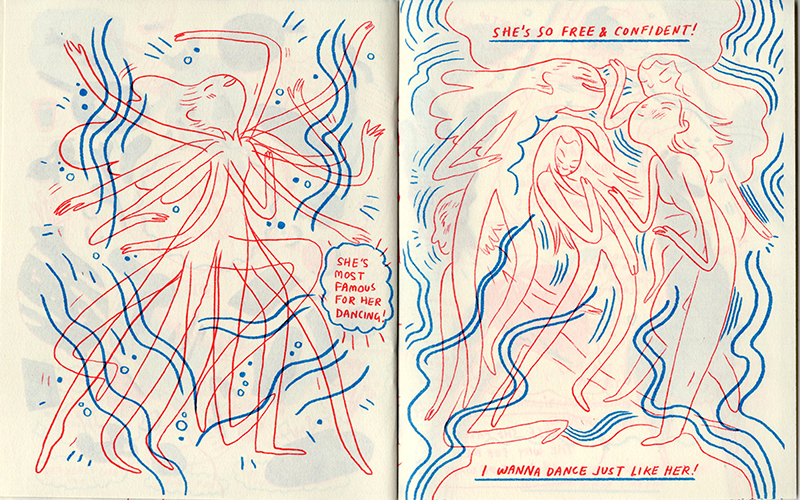
“Big Sister” by Natalie Andrewson
2. Think About Your Content
Your imagination is the limit – You may simply want to compile loose drawings or sketches, or you might actually want to string a narrative together and create a short story.
You may even want to explore personal themes which can be hard to share in public, but AOI Member Aleesha Nandhra advises to not let the topic of your zine scare you out of making it. “Whether it’s a zine about something you are very passionate about, or it’s a very personal story, you will be surprised by how many people will either relate to it, or simply enjoy reading it/looking at it. It always surprises me!”
Starting a comic with a strong emotion in mind, like rage or nostalgia, is Natalie‘s best motivator. “It usually breaks any anxiety building up and keeps the spark of the comic alive (especially once I’ve hit that ‘8 hours in front of my drawings without moving’ point). Find something you care about deeply and use the zine or comic as a space to explore it: You’ll be surprised by how quickly the story flows out of you.”
3. Visualize It
“Remember to paginate your pages and plan ahead if you want your zine to work in sequence. I’ve made the mistake of getting pages the wrong way round an embarrassing amount of times,” suggests Aleesha.
Sketching ideas and layouts is great, but Kristyna finds making a mock up out of scrap paper the most beneficial thing when planning a zine. “Nothing fancy: Just a few scraps of paper folded together into a little blank booklet. I use the mock up to plan my pages, writing or sketching onto it directly. Then I take it apart to figure out my page order for print, as figuring out the printers pairs is the most brain-melting part of the process for me!”
4. Make It
Ed Cheverton‘s prime advice is to play with the format. “Being a zine maker means you can have total control over its production. Sometimes simply folding A4 sheets and stapling them together is all that might be required. But you have the chance to play with different sizes not in the A series, different page sizes within the book itself, all the various paper stocks on offer, different binding techniques, printing methods or a combination of all the above. Keep the contents in mind; if there’s only a few pages then an intricate sewn bind isn’t necessary, if there are lots of drawings of different sizes then it makes sense to play with different page sizes for them.”
5. Don’t Stop
The process has so many stages it can feel overwhelming, but Kristyna advises to always finish – Even if the final product may feel far from perfect.“Start small and finish it, make multiples, list it in your online shop. All the little lessons you learn on the way will power up you next zine exponentially.”
Keep practicing and setting yourself challenges. As Ed suggests: “Because zines are such a malleable and open format for presenting your work, they are a great opportunity to set yourself challenges. Try making a zine every day for a week, where each one is a different format and/or binding. Make the tiniest zine you can. Make the largest. Make an edition of zines without the use of a digital printer or any other traditional printing methods (screenprinting, risograph, linocut, etc). This year I’m planning to make a new zine every month.”
It may all seem like an awful lot of work, but Aleesha urges to have fun with the process.“Remember: You are your own boss when making zines”, adds Kristyna. “There’s no brief or client to please, no editor watering down your hot take – Say whatever you want and say it loud, proud and clear.”
6. Embrace the Culture
After making a few zines, you may even want to start showcasing them and selling at fairs. There are many all around the UK, and a good research can show you which may be the best one(s) for you to be a part of.
Although zine-making may seem almost like a visual-artsy club, it’s not exclusively owned by Illustrators. Ed warns to be conscious of zine culture and inclusivity: “I’ve sometimes seen snobbery and an air of exclusivity at art fairs about zines that perhaps don’t fall into the ‘illustration’ category, or weren’t printed with a specific fancy method. I spoke to a zine maker recently who has been denied tables at art zine fairs purely as her zines weren’t “illustration zines”, she was predominantly a poet. We should be mindful of the larger zine community and embrace zines from all creators.”

“A Measure of Space” by KB / “Shipcraft” by EC
We want to thank the four Illustrators featured for granting us such great insight into their zine making process. Find them online:
Aleesha Nandhra / Ed Cheverton / Kristyna Baczynski / Natalie Andrewson
If you are keen to make zines but aren’t too confident or don’t have the tools to produce them yourself, why not try printing them with Newspaper Club? They are currently offering all AOI Members an exclusive discount. Find the code in our first January members’ newsletter.
Back to News Page

